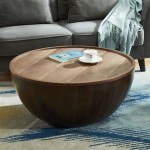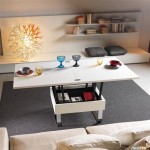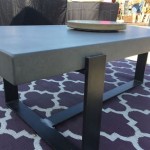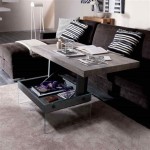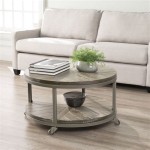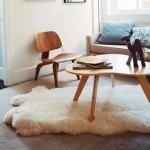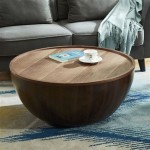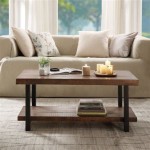Types of Tables For Eating
The selection of a suitable table for eating involves consideration of several factors, including the available space, the number of individuals typically accommodated, the desired aesthetic style, and the intended function. A wide variety of table types cater to different needs and preferences, each possessing unique characteristics in terms of shape, size, material, and overall design. Understanding these distinctions is crucial for making an informed decision that complements the dining environment and fulfills practical requirements.
Dining Tables: The Core of the Eating Space
Dining tables are conventionally understood as the central furniture piece within a dining room or designated eating area. Their primary purpose is to provide a surface for food consumption, and as such, they are typically designed to be robust and easily cleaned. Dining tables are available in numerous shapes and sizes to accommodate varying numbers of diners.
Rectangular Dining Tables: These are arguably the most common type of dining table. The linear shape allows for efficient use of space, particularly in rectangular rooms. Rectangular tables easily accommodate larger groups, offering ample seating along both long sides. The straightforward design also makes them versatile for both formal and informal dining settings. Consider the overall dimensions of the room when choosing a rectangular table to ensure sufficient space for movement around the table and other furniture.
Square Dining Tables: Square tables are well-suited for smaller spaces or for accommodating smaller groups of two to four individuals. They promote a sense of intimacy and equality among diners, as everyone is equidistant from each other. A square table placed centrally in a square room creates a balanced and harmonious aesthetic. With the exception of extending designs, they are generally not suitable for larger gatherings.
Round Dining Tables: Round tables promote conversation and a sense of camaraderie among diners. The absence of corners allows for easy flow around the table and encourages eye contact between individuals. Round tables work well in square rooms, softening the harsh angles. However, they typically require more floor space than rectangular or square tables to accommodate the same number of people. The absence of a head and foot also lends itself to less formal occasions.
Oval Dining Tables: Oval tables combine the benefits of both rectangular and round tables. They offer a generous surface area for serving dishes and seating multiple diners, while also maintaining a softer, more approachable aesthetic than a strict rectangle. The curved edges allow for easier movement around the table and create a more visually appealing focal point in the room. Oval tables are aesthetically versatile, fitting well in both traditional and contemporary spaces.
Extending Dining Tables: These tables offer the flexibility to expand their surface area when needed to accommodate additional guests. The extension mechanism can vary, ranging from leaves that are inserted in the middle of the table to drop-leaf designs or butterfly leaf extensions. Extending tables are a practical choice for individuals who frequently host larger gatherings but do not require a large table on a daily basis. They are available in rectangular, oval, and occasionally round shapes.
Kitchen Tables: Casual Dining and Functionality
Kitchen tables are typically smaller and more informal than dining tables, intended for everyday meals and quick snacks. They are often designed with durability and ease of cleaning in mind, given their proximity to food preparation areas. Kitchen tables can serve multiple functions, including providing a surface for food preparation, a place for children to do homework, or a casual meeting spot.
Breakfast Nook Tables: These tables are designed to fit within a designated breakfast nook, often a corner space or a small alcove. They are typically round, square, or rectangular and are often accompanied by banquette seating. Breakfast nook tables create a cozy and intimate dining area, ideal for small families or couples. The seating arrangements are often fixed, maximizing the use of available space.
Counter-Height Tables: Counter-height tables are designed to be the same height as kitchen counters, typically around 36 inches. They are often paired with stools rather than chairs, creating a more casual and contemporary dining experience. Counter-height tables are a good option for smaller kitchens, as they can double as a food preparation surface. They also offer a more ergonomic dining posture for some individuals.
Drop-Leaf Kitchen Tables: Similar to extending dining tables, drop-leaf kitchen tables offer the flexibility to expand or reduce their surface area as needed. The leaves can be folded down to save space when not in use, making them a practical choice for smaller kitchens. Drop-leaf tables come in various shapes and sizes and can be used for both casual meals and occasional entertaining.
Butcher Block Tables: Primarily designed for food preparation, butcher block tables can also serve as a casual dining surface. They are typically made from hardwood and are incredibly durable. Due to their weight they are generally stationary. The thick surface provides a stable platform for chopping and slicing, and the natural wood grain adds warmth and character to the kitchen. When used for dining, butcher block tables offer a rustic and informal aesthetic.
Specialty Tables: Unique Dining Experiences
Beyond the standard dining and kitchen tables, several specialty tables cater to specific needs or aesthetic preferences. These tables often feature unique designs, materials, or functionalities that set them apart from conventional options. Choosing a specialty table can add a distinct personality to the dining space and cater to unconventional dining habits.
Coffee Tables for Eating: While not strictly designed for dining, coffee tables can serve as an informal eating surface, particularly in living rooms or entertainment areas. This is especially true for coffee tables that offer features such as a lift-top mechanism. These tables allow for comfortable eating while watching television or socializing. When selecting a coffee table for eating, consider the height, stability, and ease of cleaning.
Folding Tables: Folding tables are a versatile and portable option for temporary dining arrangements. They are ideal for outdoor gatherings, parties, or situations where extra table space is needed on an occasional basis. Folding tables are typically lightweight and easy to store, making them a practical choice for individuals with limited space. While not as aesthetically refined as permanent dining tables, they offer a convenient and cost-effective solution for accommodating additional diners.
Picnic Tables: Primarily designed for outdoor use, picnic tables offer a rustic and informal dining experience. They are typically made from wood or metal and feature attached benches for seating. Picnic tables are ideal for backyard barbecues, picnics in the park, or other outdoor gatherings. The sturdy construction and simple design make them a durable and practical choice for outdoor dining.
Bar Tables: Bar tables, also known as pub tables, are taller than standard dining tables, typically around 40-42 inches in height. They are often paired with bar stools, creating a casual and social dining environment. Bar tables are a popular choice for game rooms, home bars, or small dining areas. They offer a more elevated dining experience and can encourage conversation among diners.
Console Tables for Eating: Console tables, traditionally used for decorative purposes, can be adapted into small dining surfaces, particularly in apartments or small spaces. Placed against a wall when not in use, a console table can be pulled out and utilized by a few people. Often paired with folding chairs that can be easily stored, the console table provides flexibility and takes up minimal space.
The materials used in table construction influence the table's durability, aesthetics, and maintenance requirements. Common materials include wood, metal, glass, and plastic, each offering distinct advantages and disadvantages.
Wood Tables: Wood is a classic and versatile material for dining tables. It offers a natural warmth and beauty that can complement a variety of interior styles. Different types of wood, such as oak, maple, cherry, and walnut, offer varying levels of durability, grain patterns, and color tones. Wood tables require regular maintenance, such as polishing and sealing, to protect them from scratches and stains.
Metal Tables: Metal tables are known for their durability and contemporary aesthetic. They are often made from steel, aluminum, or wrought iron and can be finished in a variety of colors and textures. Metal tables are resistant to scratches, stains, and heat, making them a practical choice for busy households. However, they can sometimes feel cold or industrial, depending on the design.
Glass Tables: Glass tables offer a sleek and modern aesthetic. They can create a sense of openness and lightness in a room, particularly in smaller spaces. Glass tabletops are easy to clean and maintain, but they are also susceptible to scratches and fingerprints. Tempered glass is the preferred choice for dining tables, as it is more resistant to shattering.
Plastic Tables: Plastic tables are a budget-friendly and lightweight option for casual dining. They are often made from polypropylene or other durable plastics and are available in a wide range of colors and styles. Plastic tables are easy to clean and maintain, making them a practical choice for outdoor use or for families with young children. However, they may not be as durable or aesthetically appealing as wood or metal tables.

The Complete Guide To Dining Tables Types And Styles Cabinfield Blog

The Complete Guide To Dining Tables Types And Styles Cabinfield Blog

The Complete Guide To Dining Tables Types And Styles Cabinfield Blog

The Complete Guide To Dining Tables Types And Styles Cabinfield Blog

Choosing The Right Dining Table Size Your Ultimate Guide Cabinfield Blog

Diffe Types Of Tables Names Voary And Their Pictures Mr Mrs English

Dining Table Set Buy Wooden Sets At Best In Furniture For Every Home Sunrise International

The 5 Best Dining Tables Of 2025 Reviews By Wirecutter

Buy Dining Table Sets Upto 70 Off Wooden Street

Extendable Dining Table Sets And Room Tt Us
Related Posts

